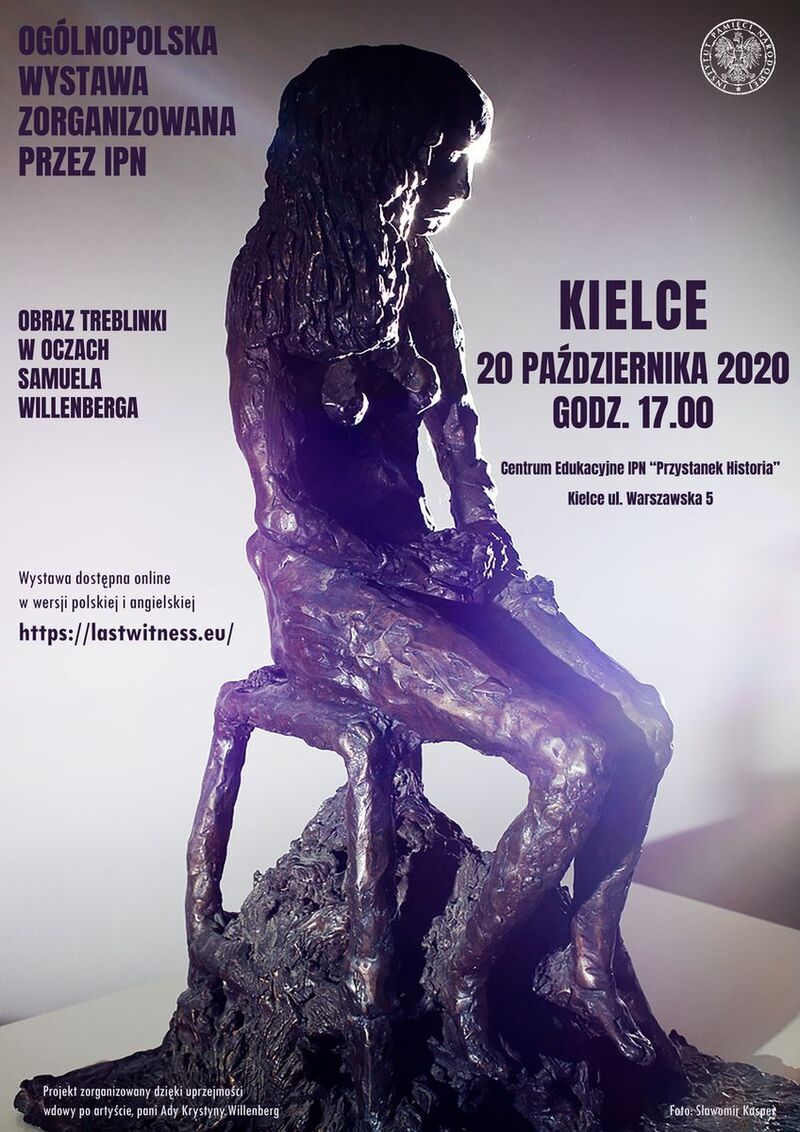Fifteen sculptures by Samuel Willenberg bring back the individual tragedies of those who went through the German extermination camp in Treblinka. With this initiative, the Institute of National Remembrance would like to pay tribute to the victims of the Holocaust. The exhibition, organized by the IPN as part of a nationwide, year-long educational project, will be on display until 17 November 2020.
The inauguration will be accompanied by the screening of "Treblinka’s Last Witness". This documentary film by Alan Tomlinson focuses on the annihilation of Polish Jewry in Treblinka, enriched with Samuel Willenberg’s riveting narrative and archival footage from the period. The film features opinions of historians, and Willenberg’s sculptures are presented alongside with the author’s painful memories from the camp.
Samuel Willenberg was deported to Treblinka on 20 October 1942. The first thing he was told to do was to take off his shoes and tie them by shoelaces. This shows that all personal belongings were confiscated from the prisoners of extermination camps. According to the Third Reich’s policy, nothing could be wasted, including personal effects. Then, Samuel, thanks to his friend from Częstochowa, did not perish in the gas chamber as the only one out of 6,000 deportees from the ghetto in Opatów.
Willenberg presented his memories as images: the orchestra dressed as clowns accompanying the prisoners going to die, the Scheissmeister – a Jew who made sure that the prisoners did not sit in the latrine for too long, a man with a trolley collecting glass bottles to eliminate any signs of those killed at Treblinka, a young girl having her hair shaved before entering the gas chamber, segregating the clothes of the murdered. These poignant works are an extraordinary testimony to German crimes.
Despite his traumatic experience in occupied Poland, Willenberg had the courage to return to his homeland till the end of his life in 2016. When he left for Israel in 1950, Willenberg and his wife came to Poland on multiple occasions – alone or as guides of educational trips for Israeli youth. They became the proponents of good relations between Poland and Israel, without hiding tragic as well as beautiful events that connected both groups of Polish citizens during German occupation.
The exhibition was prepared thanks to Ada Willenberg, the widow of Samuel Willenberg. She tirelessly continues his husband’s work, in the name of commemorating one of the most tragic chapters in the history of the Holocaust, especially among young people.
